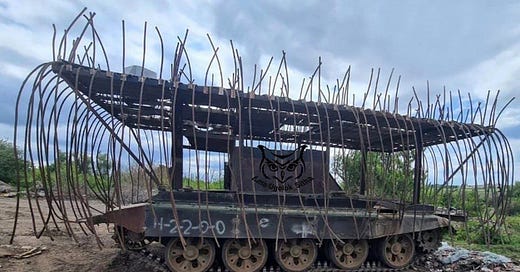Russia's Porcupine Tanks Are Actually Working
Outfitted with spiked rebar to block Ukrainian drones, these tanks just might survive a strike
First there were cope cages: metal grills surrounding a vehicle. After that—turtle tanks with sheets of metal attached to their cages. Now the Russians are adding metal quills to more and more armored vehicles, transforming them into “porcupine” vehicles.
A striking image of a bizarre modification to a Russian armored engineering vehicle is the latest evidence that a layer of metal spikes—like the quills of a porcupine—can protect vehicles from some types of explosive drone.
A photo recently circulated online depicting a Russian BREM engineering vehicle, based on the chassis of a T-62 tank. But it wasn’t just any BREM. No, this vehicle sports seemingly hundreds of lengths of rebar or some other thick metal wiring, jutting from an anti-drone screen bolted to the vehicles’ hull.
Both sides in Russia’s 40-month wider war on Ukraine use BREMs to tow disabled vehicles, help build fortifications and breach the enemy’s own fortifications. Traveling near the line of contact, BREMs are in constant danger from the thousands of tiny first-person-view drones that prowl the 1,100-km front every day.
So it makes sense that the Russians would up-armor their BREMs. What’s surprising is that they’re adding porcupine armor in addition to the standard cope cage. One month after the first Russian porcupine vehicle appeared along the front line, there’s mounting evidence that the strange armor is becoming standard on the Russian side.






For now.
how do the crew get in and out?